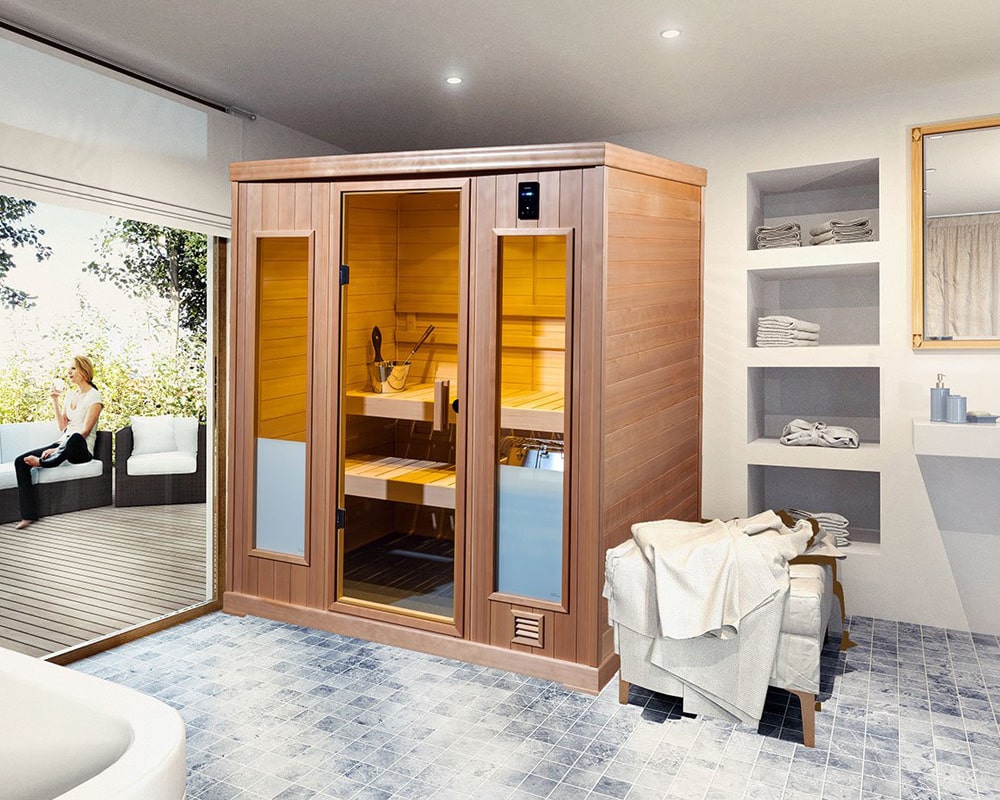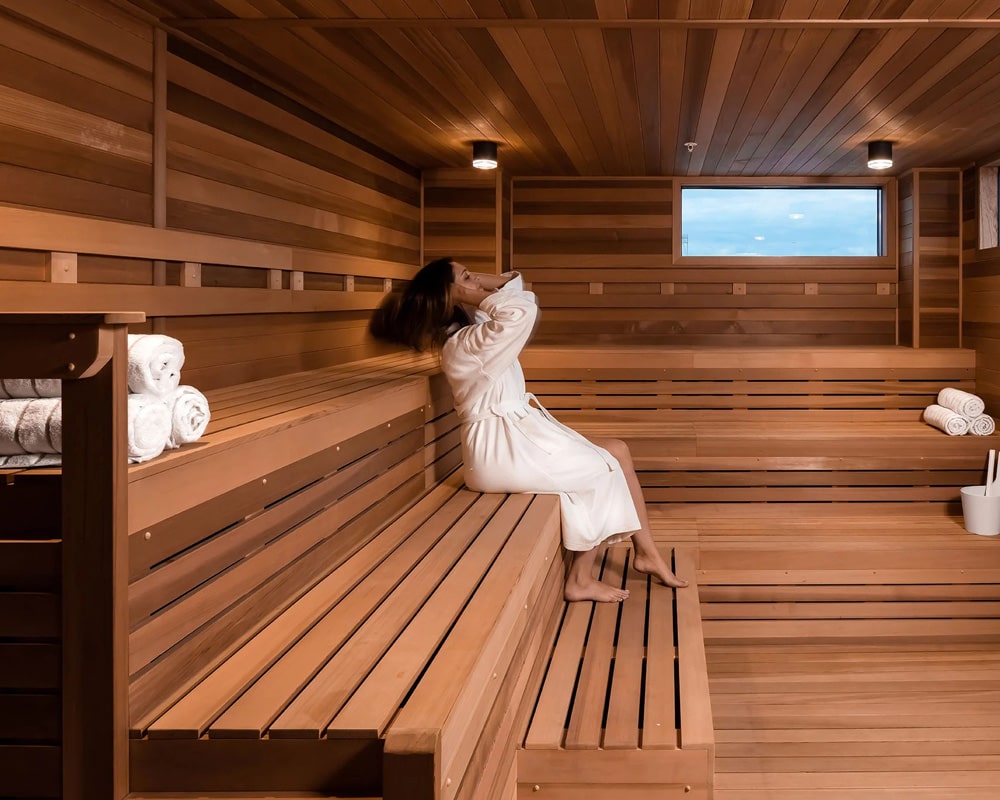Year-End Hot Tub Savings
Up to 40% off In-Stock Models!
Shop Hot Tubs

Contents
If you’re in the market to purchase an infrared sauna, you may have come across terms like, “near infrared,” “far infrared,” and “full spectrum.” You may be wondering what they all mean and which offers more benefits than the other. We can help provide the clarity you’re looking for.
We understand how confusing this can be and want to help simplify your shopping experience. To help shed light on the distinctions between near infrared and far infrared saunas, keep reading.
Near infrared light or NIR light is the kind of light closest to the visible spectrum. To explain further, the spectrum of infrared light encompasses wavelengths spanning from 700 to 100,000 nanometers (nm). Within this spectrum, near-infrared light (NIR) comprises wavelengths ranging from 700 nm to 1,400 nm.
While infrared light has the capacity to heat your body from the inside, NIR can penetrate approximately 5 mm beneath the skin. As the light spectrum gets lower, penetration increases.
NIR is believed to offer superior benefits, including promoting collagen production, enhancing circulation, improving skin texture, and pain relief.
Many people enjoy near infrared saunas because they emit low concentrations of electromagnetic frequencies.

Far infrared saunas are one of the leading heat sources for contemporary saunas today. They operate similarly to near infrared but have different wavelengths. Far infrared saunas produce infrared light at the farther end of the spectrum, with wavelengths between 3,000 and 100,000 nm. Far infrared light only penetrates down to about 0.1 mm beneath the skin.
Far infrared light or FIR also provides health benefits. Because it affects our body’s natural proteins, it has the potential to improve blood vessel health, reduce arrhythmias, and help with pain and stiffness.
When comparing near infrared saunas and far infrared saunas, neither has a strict advantage over the other. Both are great at emitting beneficial infrared light and offer a deep relaxing experience. It depends on your specific goals and needs.
Near infrared saunas may offer broader benefits for anyone without specific heart conditions or arthritis while far infrared saunas are great for providing targeted benefits.
If you’re looking for a well-rounded experience, you may want a full-spectrum infrared sauna. These saunas naturally emit light across the entire infrared spectrum, so you don’t have to pick and choose the benefits you receive.

Yes, infrared saunas are safe! Infrared light provides an array of health benefits such as:
Unlike UV rays from the sun or tanning beds, you cannot get sunburned in an infrared sauna. There are no known dangers to using an infrared heat source in your sauna. Hospitals even use infrared heating lamps to gently warm newborn babies.
As you can see, near and far infrared saunas detoxify the body and provide a range of health benefits, they just go about it differently. Infrared saunas provide topical relief for skin problems as well as shallow body pains, whereas far infrared saunas provide a more profound effect.
Now that you have a better understanding of near infrared vs far infrared heat, which type of sauna will you pursue? Let Great Bay Spa & Sauna help! We offer a wide range of Clearlight® and Helo saunas to cater your unique needs and preferences. Explore our options and start to enjoy the benefits of infrared today!